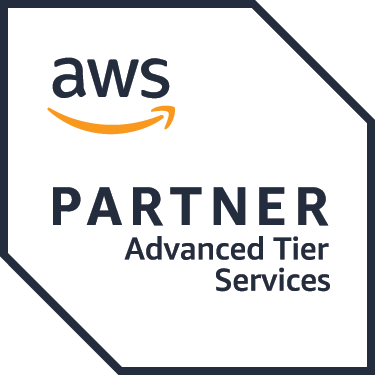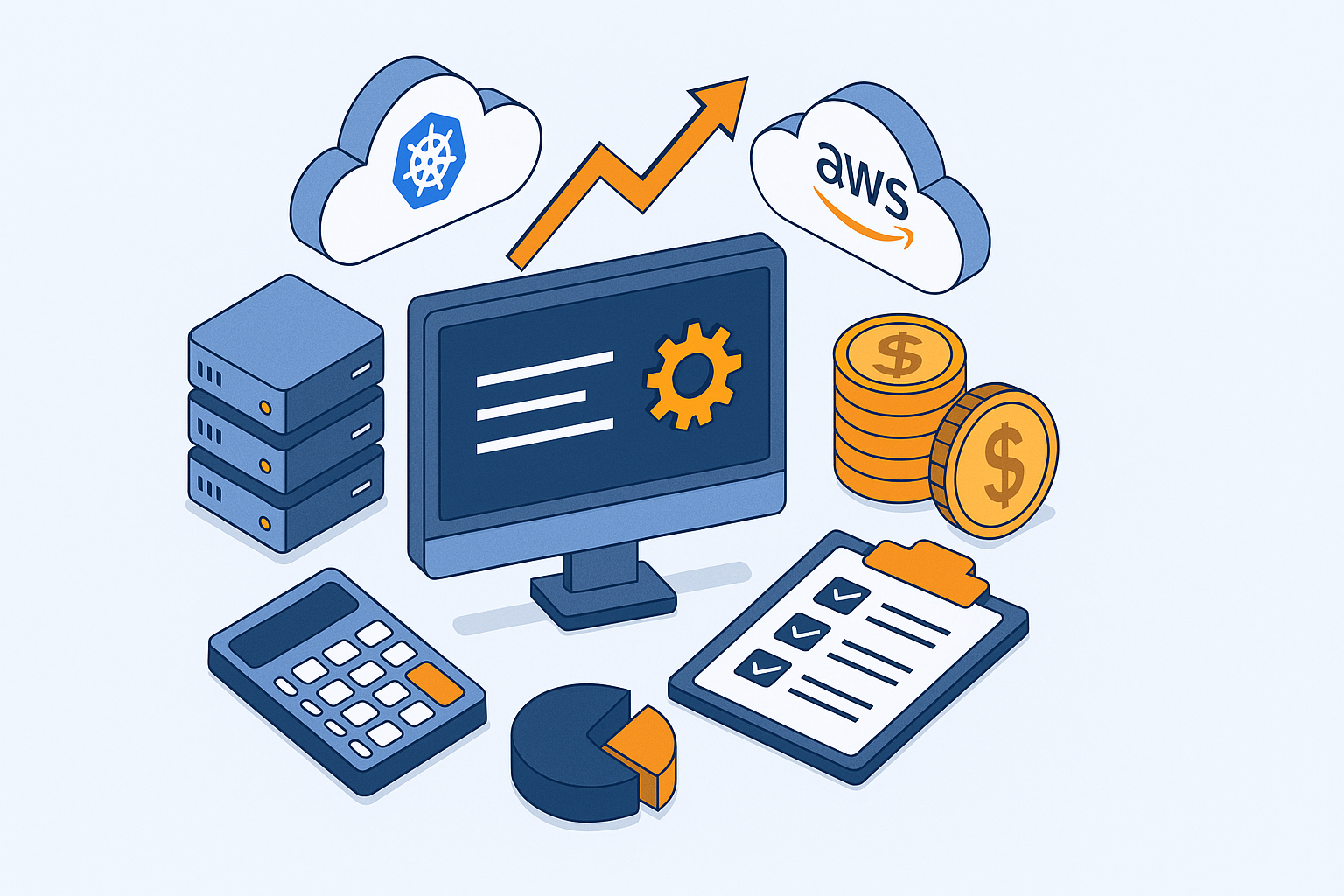
Cost Optimization in AWS DevOps: Best Practices for Efficiency
Speed is good—but not when it burns your cloud budget.
As DevOps teams automate everything, run frequent builds, and scale infrastructure on demand, costs can spiral before anyone notices. That’s why cost optimization is now a DevOps responsibility—not just finance or ops.
AWS offers unmatched flexibility and scalability, but without cost guardrails, it’s easy to leave resources running, overprovision EC2 instances, or overpay for build time. And with CI/CD pipelines deploying dozens of times a day, small inefficiencies compound fast.
The good news? You don’t need to trade speed for savings. When AWS best practices meet DevOps workflows, you get cost efficiency without slowing down delivery.
In this blog, we’ll break down:
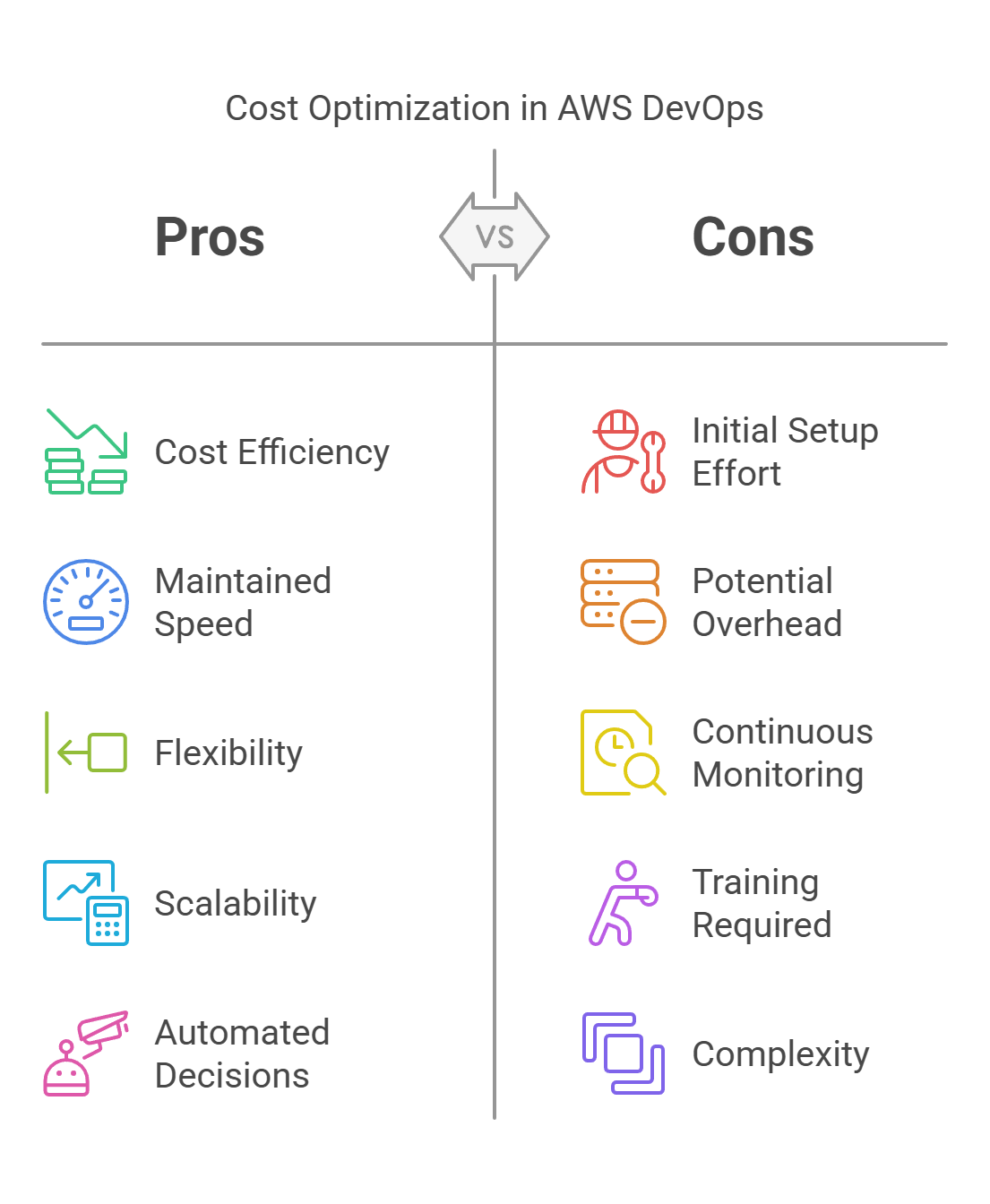
Let’s make your cloud spend as efficient as your code.
Understanding the Cost Landscape in AWS DevOps
In DevOps, costs don’t just come from infrastructure—they come from how fast and how often you move. More builds, more environments, and more automation often means more spend—unless you control it.
Let’s break down where costs creep in and how they add up.
Common DevOps Cost Zones on AWS
Hidden Cost Leaks That Sneak Past You
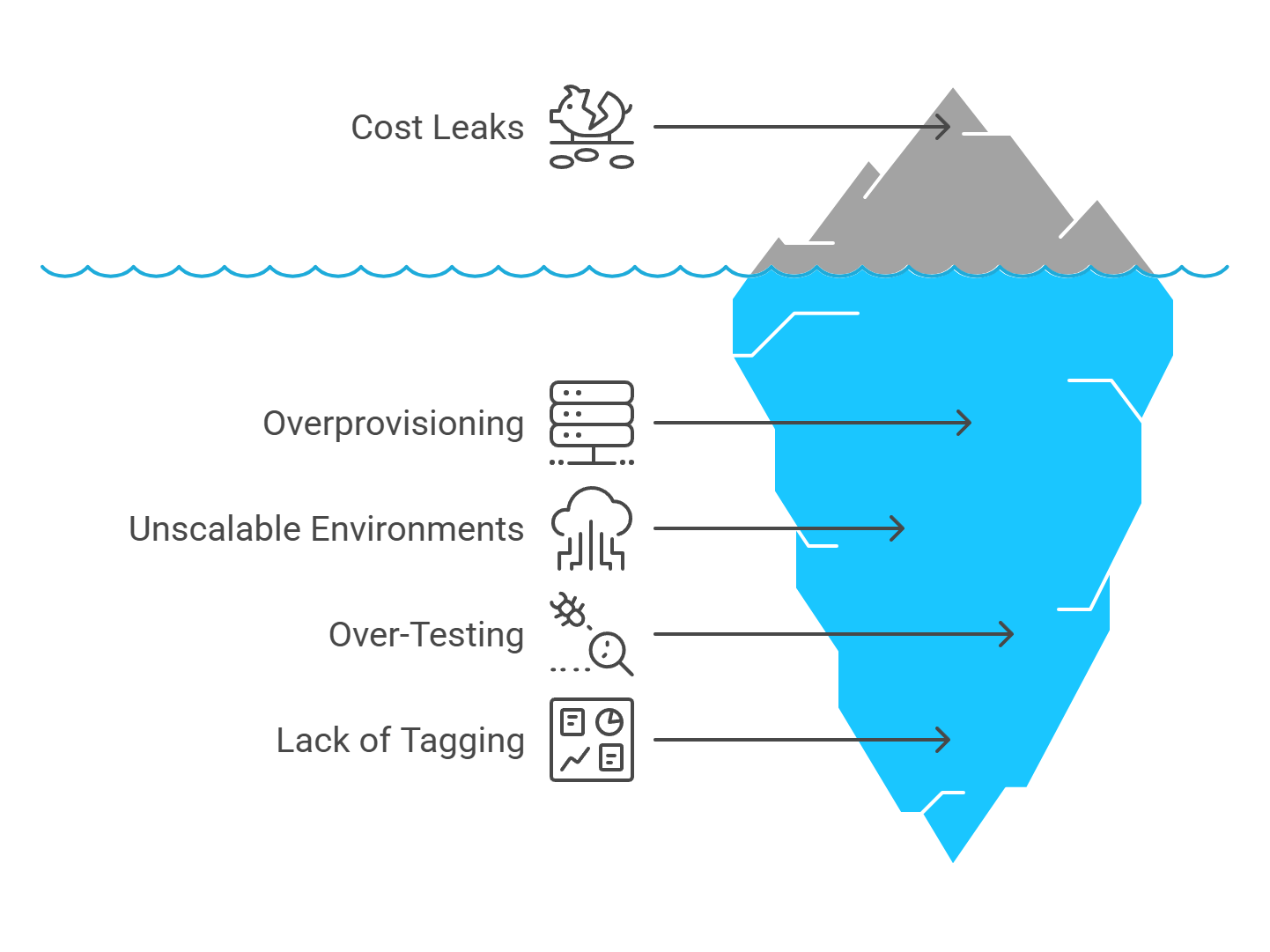
Bottom line?
DevOps gives you speed, but speed without visibility = waste.
Now that you see where the money goes, let’s move to how to control it—without slowing down your team.
Core Principles of Cost Optimization in DevOps
Cost optimization in DevOps isn’t a one-time fix—it’s a continuous mindset. Just like CI/CD automates quality and speed, DevOps teams should build in cost control as part of their daily workflows.
Here are the core principles to do it right:
DevOps is about continuous improvement. That includes your cloud bill.
Best Practices for AWS Cost Optimization in DevOps
Once you’ve got the mindset, it’s time to apply it. These best practices help you build, deploy, and manage your AWS workloads more efficiently without slowing anything down.
This is where the big savings come from—not by cutting back velocity, but by being smart at every layer.
Integrating Cost Awareness into CI/CD Pipelines
CI/CD pipelines are the heartbeat of DevOps. But if they’re not cost-aware, they’ll silently drain your cloud budget—one build, one deploy, one test at a time.
Here’s how to make cost visibility and control part of your delivery workflow.
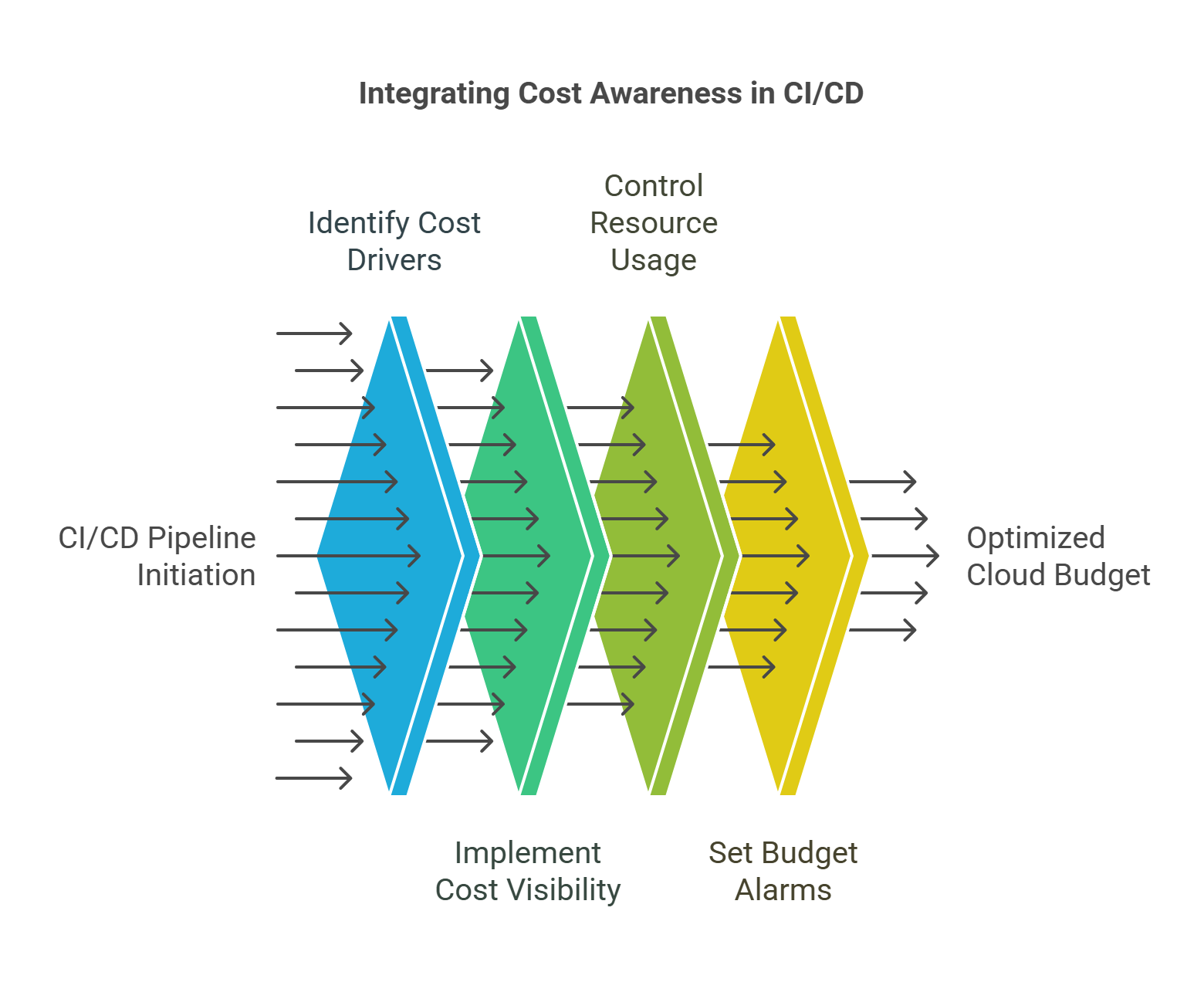
Leveraging AWS Native Tools for Cost Optimization
AWS gives you everything you need to track, analyze, and reduce spend—you just have to use the tools. Here’s what matters for DevOps teams.
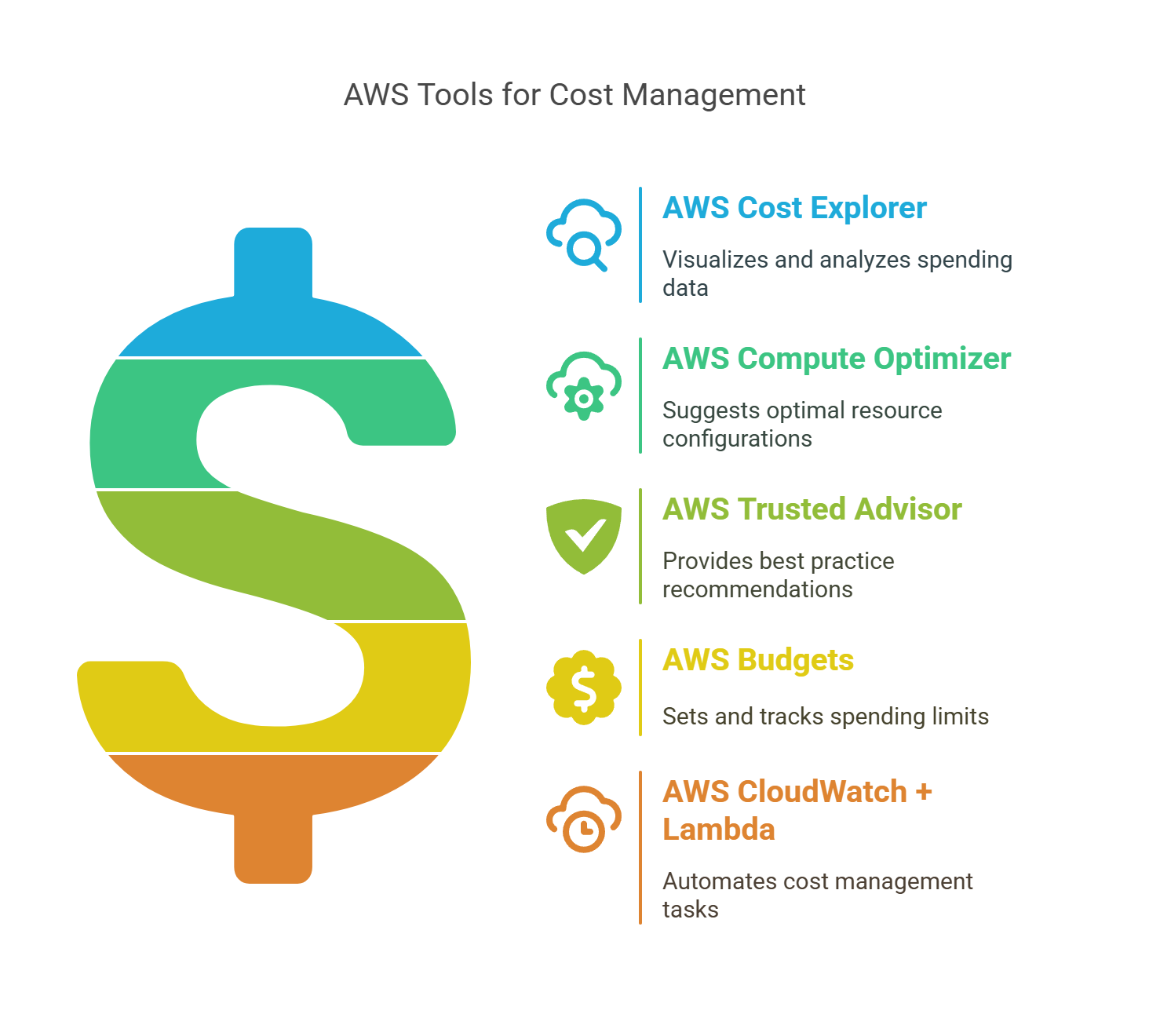
Use these tools regularly—not just during billing reviews. They help you build smarter systems, not just cheaper ones.
Case Studies: Cost Optimization in Action
These real-world examples show how DevOps teams used AWS and a cost-aware mindset to save big—without sacrificing speed or flexibility.
🏨 Case Study 1: SaaS Startup Cuts CI/CD Costs by 45%
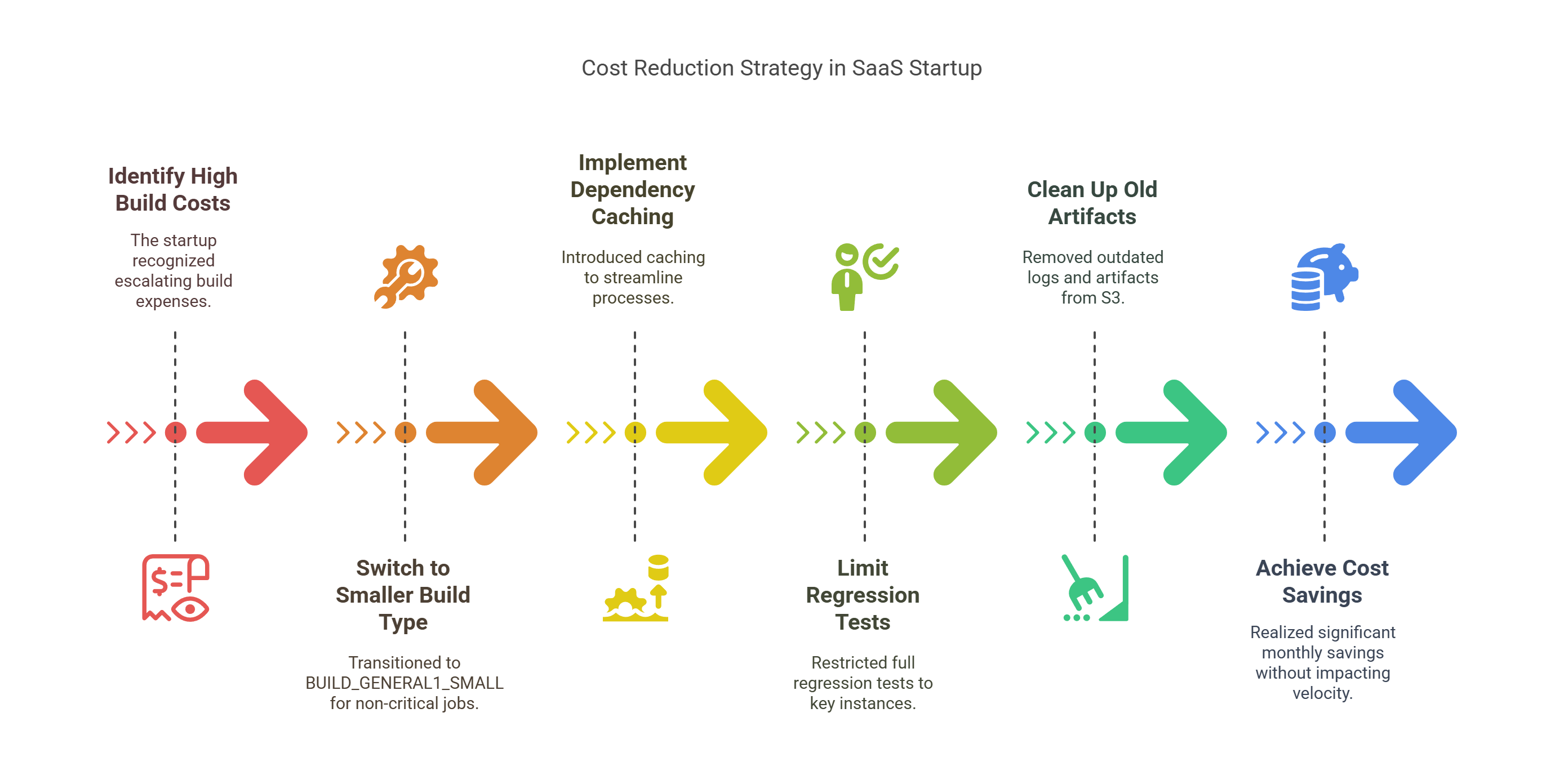
Context: A fast-moving SaaS startup was running 50+ builds a day using AWS CodeBuild with high compute settings by default.
Problem: Monthly build costs were crossing ₹40,000 and growing with every sprint.
What They Did:
- Switched to BUILD_GENERAL1_SMALL for non-critical jobs
- Added caching for dependencies
- Limited full regression tests to PRs and releases
- Cleaned up old CodeBuild logs and artifacts in S3
Result: Saved ~$18,000/month without slowing deployment velocity.
⚙️ Case Study 2: Mid-Sized IT Services Firm Automates Cost Cleanup
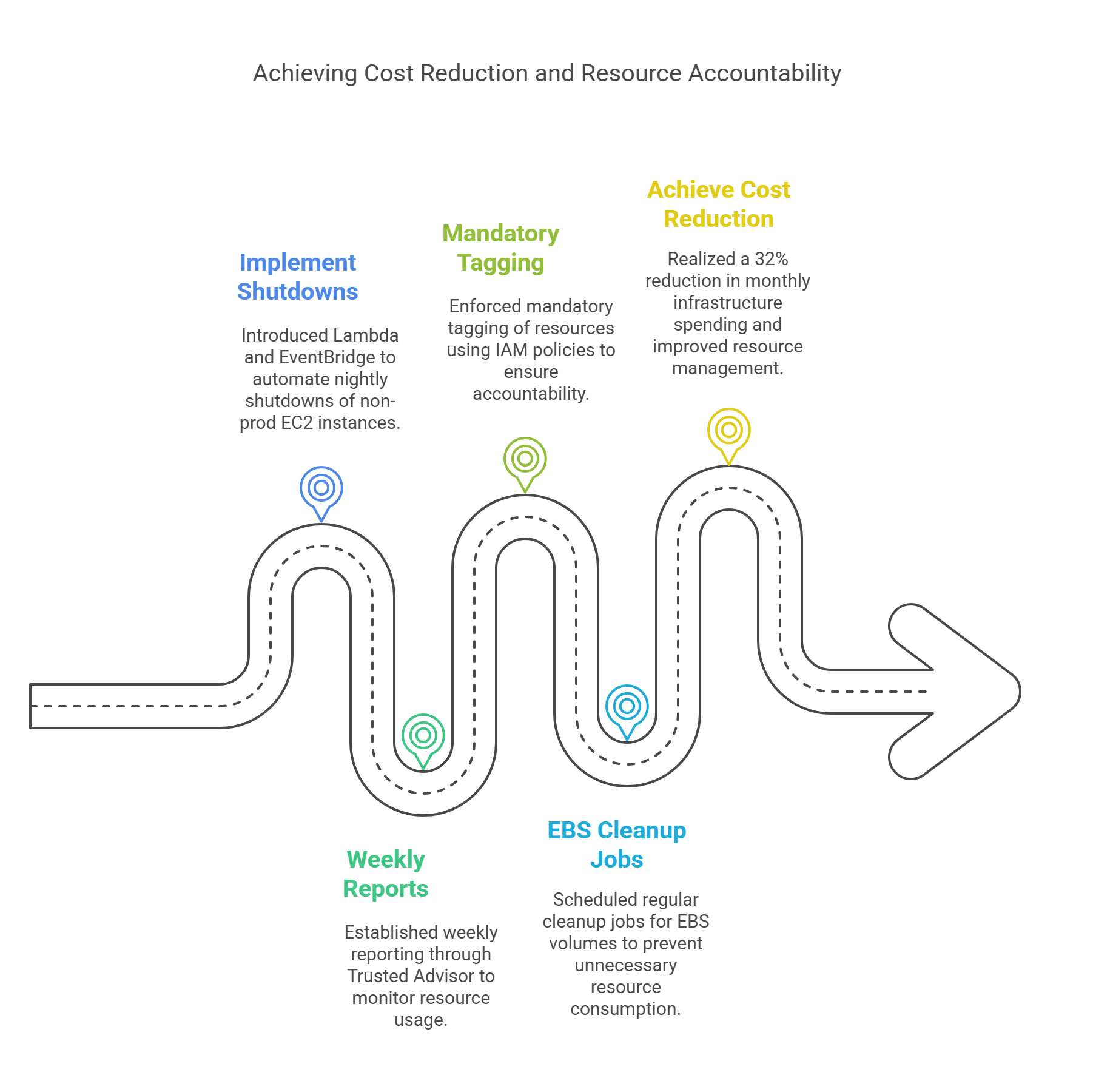
Context: They had dev/test environments running 24/7 across 4 AWS accounts. No visibility, no shutdown routines.
Problem: Idle environments, unused EBS volumes, and forgotten ELBs led to waste.
What They Did:
- Used Lambda + EventBridge to shut down non-prod EC2 instances at night
- Set up weekly reports via Trusted Advisor
- Added mandatory tagging via IAM policies
- Scheduled EBS cleanup jobs
Result: Reduced monthly infra spend by 32% and improved resource accountability.
📱 Case Study 3: Mobile App Company Optimizes Fargate Usage
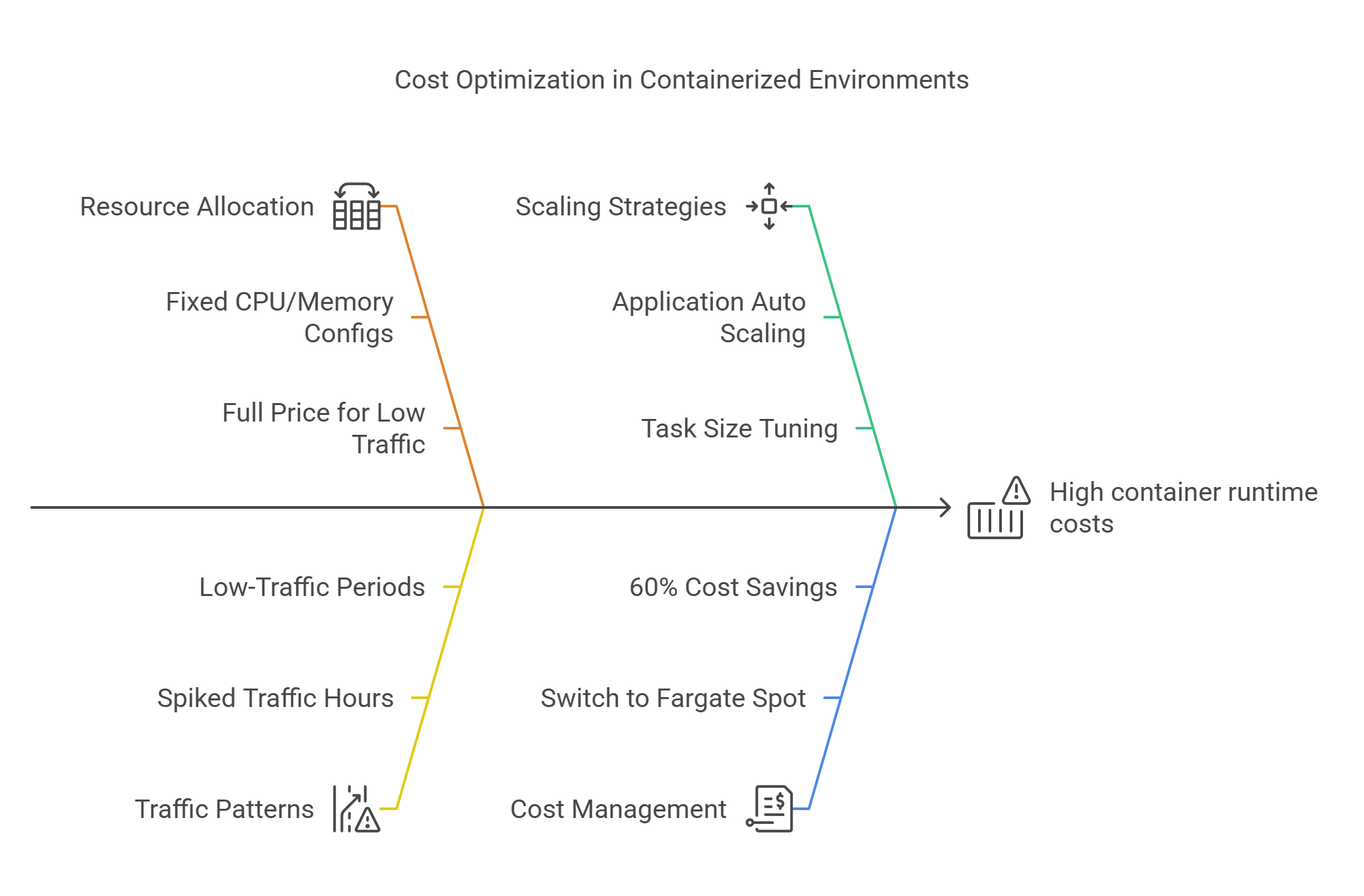
Context: Running backend APIs on Fargate with fixed CPU/memory configs. Traffic spiked only a few hours daily.
Problem: Paying full price for resources even during low-traffic periods.
What They Did:
- Switched from Fargate to Fargate Spot for dev and beta environments
- Tuned task size from 1vCPU/2GB to 0.5vCPU/1GB
- Used Application Auto Scaling for better responsiveness
Result: Saved ~60% on container runtime costs with no service disruption.
🧠 Case Study 4: Enterprise Uses Compute Optimizer to Right-Size EC2 Fleet
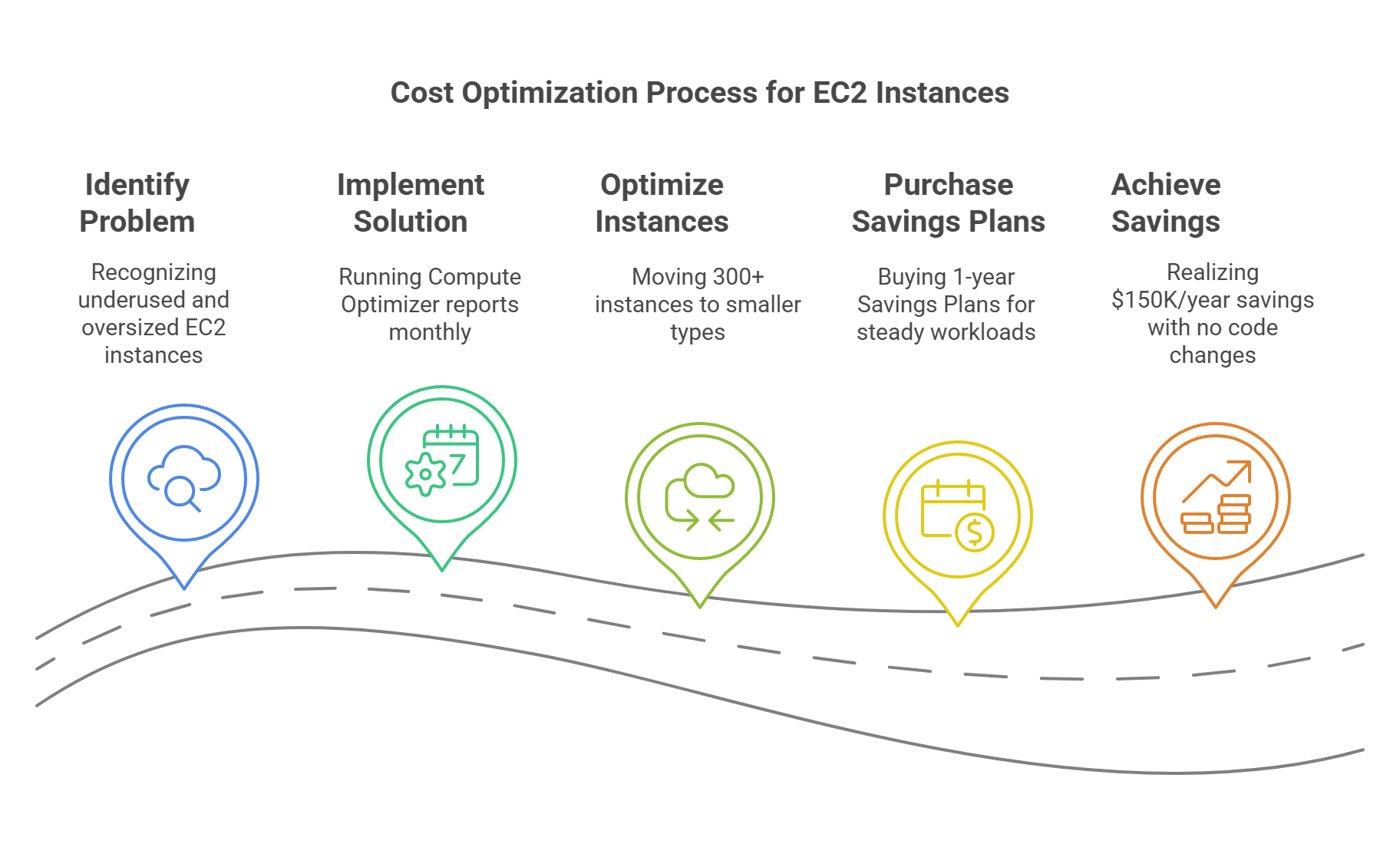
Context: Thousands of EC2 instances provisioned over years—many forgotten or oversized.
Problem: No one tracked usage patterns; RI coverage was underused.
What They Did:
- Ran Compute Optimizer reports monthly
- Moved 300+ instances to smaller types
- Bought 1-year Savings Plans for steady workloads
Result: $150K/year savings with zero code changes required.
These stories prove that even small tweaks, when scaled across teams and environments, can lead to huge savings.
KPIs to Measure Cost Efficiency in DevOps
Speed without efficiency is expensive. If you’re deploying fast but bleeding cloud spend, it’s time to monitor the right cost metrics. These KPIs help teams make smarter, data-backed decisions about usage, optimization, and ROI in DevOps environments.
Pro Tip: Don’t just report these KPIs. Add them to team dashboards or sprint reviews. Let engineers see their impact—just like they do for performance or delivery metrics.
Checklist: AWS DevOps Cost Optimization Essentials
Use this checklist to review, audit, or continuously improve your cost-efficiency practices across DevOps pipelines, infrastructure, and automation.
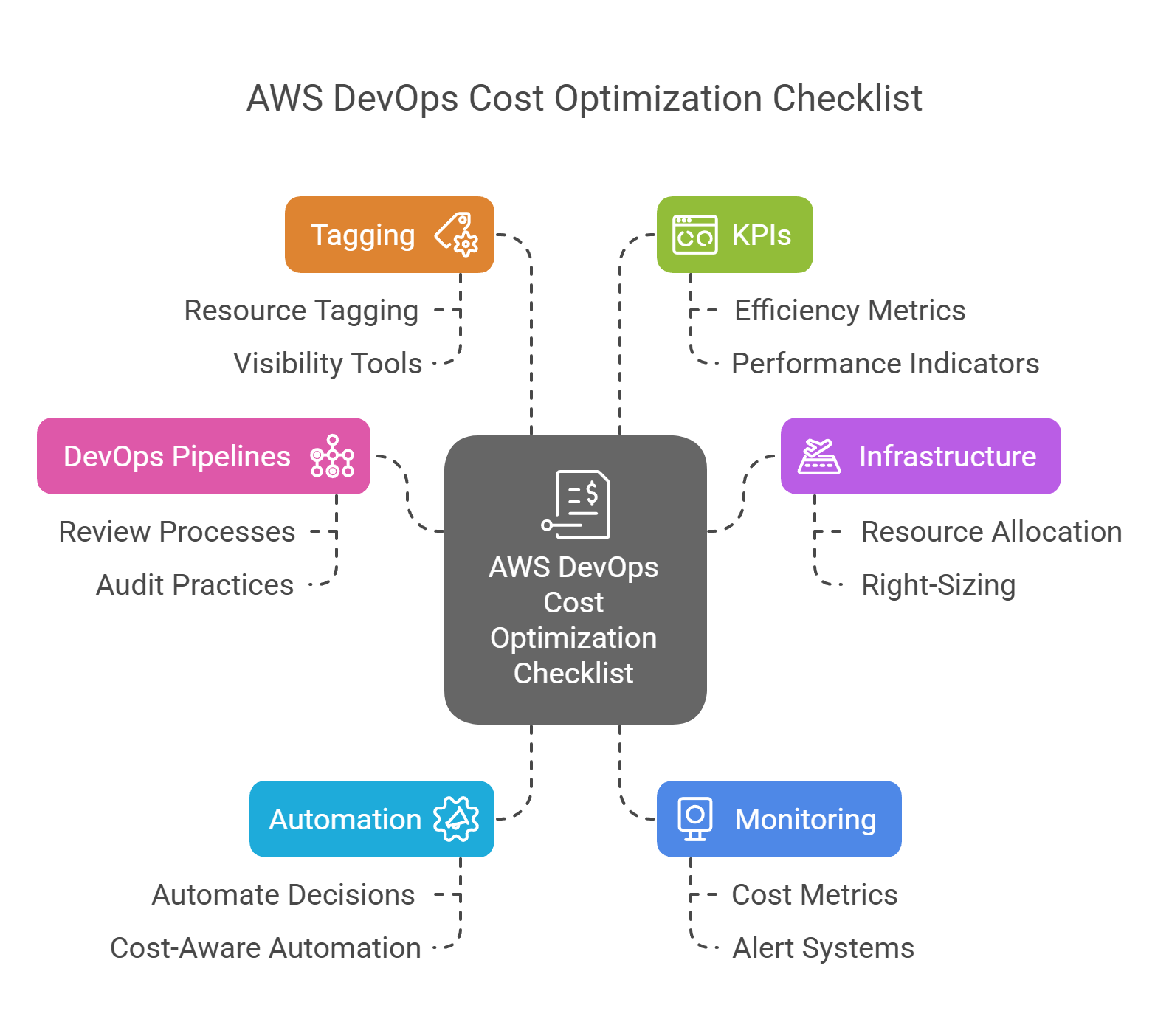
🔧 Infrastructure Optimization
🚀 CI/CD & Pipeline Efficiency
🧠 Monitoring & Automation
🏷️ Tagging & Accountability
📈 KPIs & Visibility
This checklist helps teams spot waste early, act faster, and scale responsibly. Even small adjustments—when applied consistently—can save thousands over time.
Cut Cloud Costs Without Slowing Down – Let CloudJournee Help
Cost optimization isn’t about cutting corners—it’s about building smarter. At CloudJournee, we help you streamline your DevOps workflows while making every AWS dollar count.
Whether you’re bleeding money through unused compute, oversized builds, or underutilized environments—we help you fix it, fast.
🔧 What We Do:
🎯 Get a Free AWS Cost Optimization Review
We’ll analyze your current setup, identify high-impact savings opportunities, and share a custom action plan—no commitment.
Let’s help your team move fast and spend smart.


